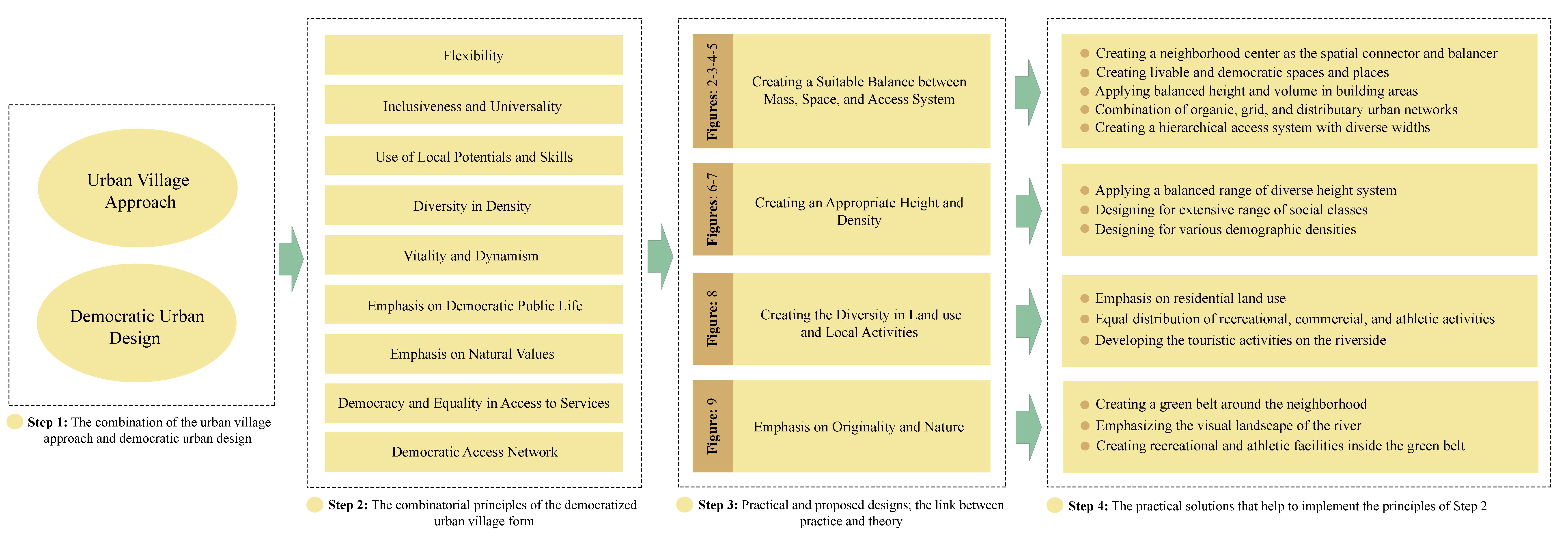BibTeX | RIS | EndNote | Medlars | ProCite | Reference Manager | RefWorks
Send citation to:
URL: http://ijaup.iust.ac.ir/article-1-395-en.html
2- MA Student, School ofArchitecture and Urbanism Faculty, Imam Khomeini International University, Qazvin, Iran
3- MA Student, School of Architecture and Urbanism Faculty, Imam Khomeini International University, Qazvin, Iran
The "Urban Village Approach" is one of the most appropriate ways to eliminate recent urban problems, including social,
environmental, cultural, and economic shortcomings. Although the urban village approach is generally proper to resolve these
types of flaws, its combination with the democratic concept of urban design can definitely provide more effective solutions. So
at first, this paper aims to present a theoretical combination of these two approaches in the form of recommended principles
and criteria, and then attempts to introduce a hypothetical wasteland for illustrating the practical aspects of it through design
suggestions. A major part of the achievements of this paper is based on theoretical and empirical findings obtained from
comparisons and descriptions, but in order to achieve more tangible results, the practical aspects of findings are proven by
displaying 3D designs and schemes. Consequently, these proposed principles and criteria can be utilized in designing a
democratized urban village form that finally leads to some vital qualities, such as flexibility, inclusiveness, localism, diversity,
vitality, naturality, identity, etc. These qualities, in an appropriate and consistent relation with the existing contexts, will also
bring some desired concepts within, like justice, equality, freedom, and democracy to the urban and rural areas and
neighborhoods.

• Combining and integrating the urban village approach with democratic norms of urban design can help to develop the social and democratic features of the urban villages, besides the environmental issues.
• The combinatorial principles, such as diversity, public life, public participation, social justice and equity, naturism, accessibility, contextualism, vitality, flexibility, inclusiveness, and also their sub-principles are tested in a hypothetical wasteland, to prove the practical aspects.
| Rights and permissions | |
 | This work is licensed under a Creative Commons Attribution-NonCommercial 4.0 International License. |





